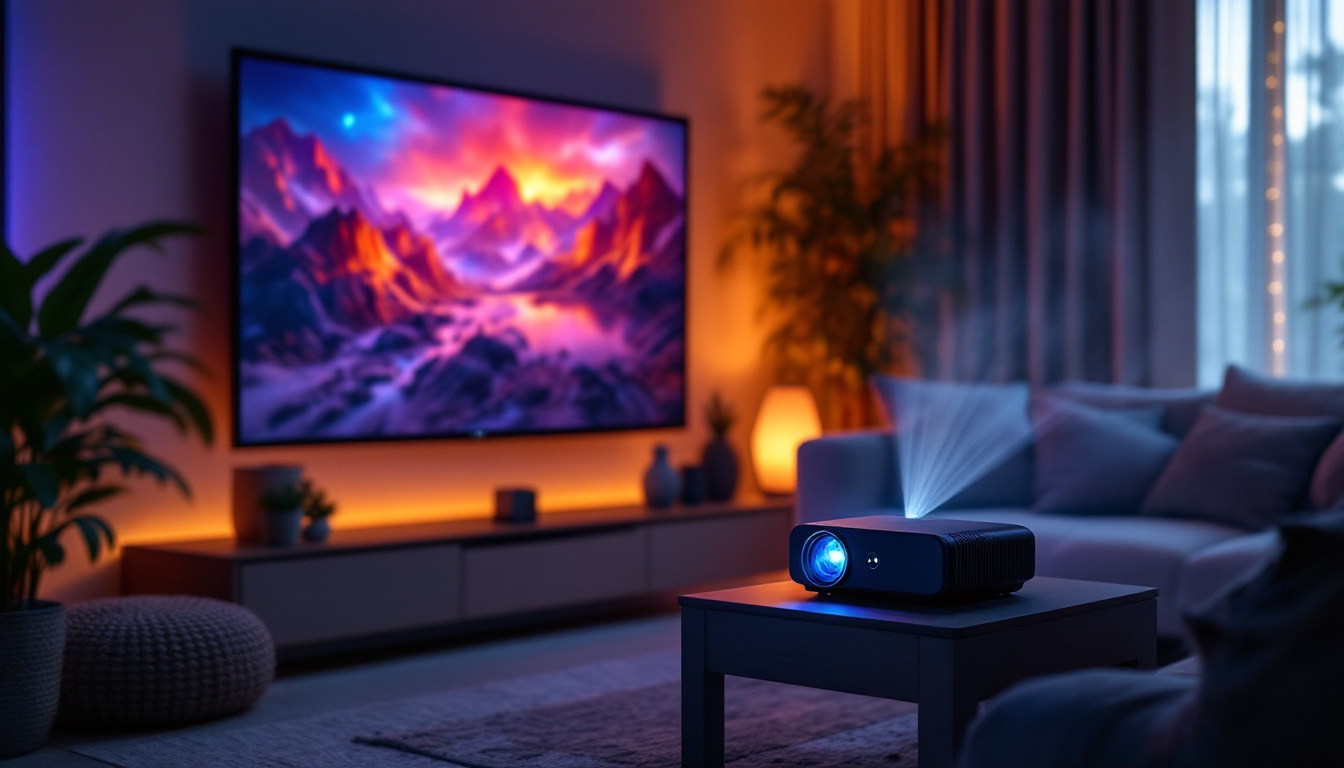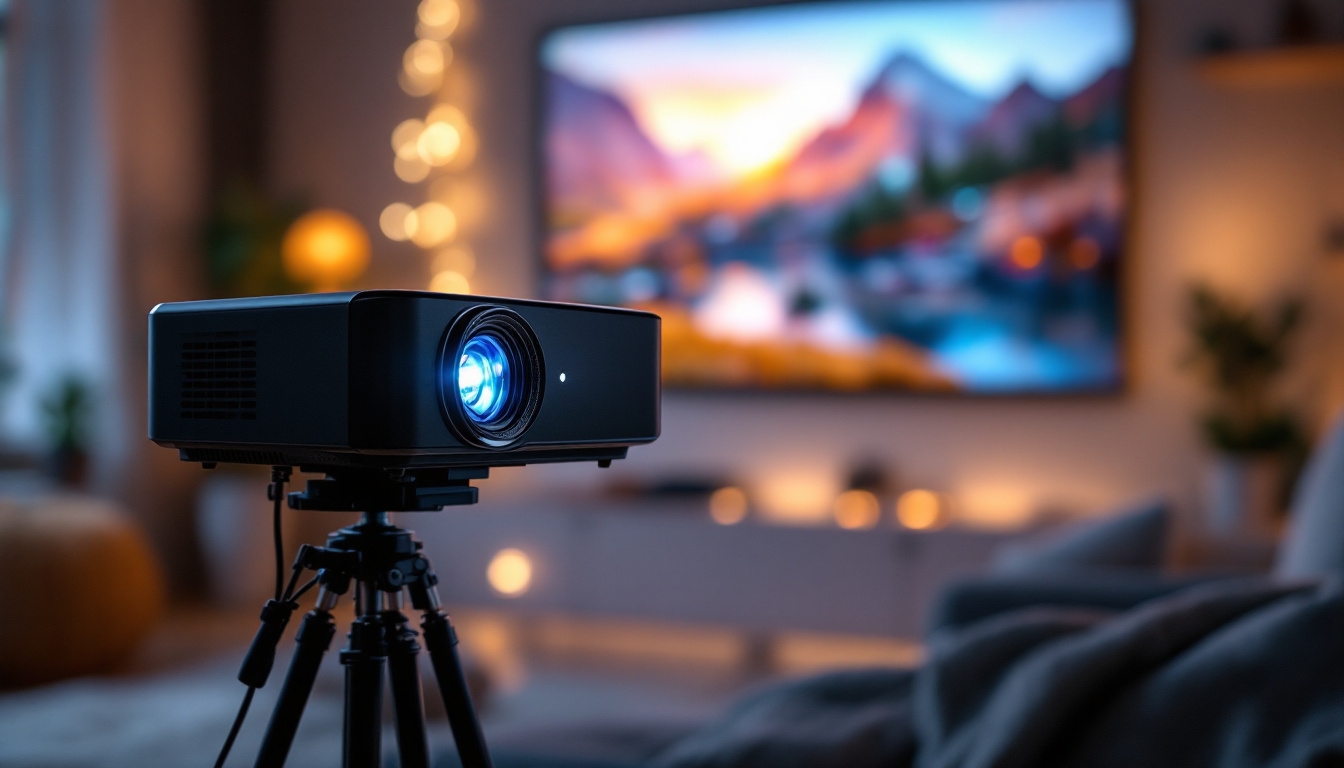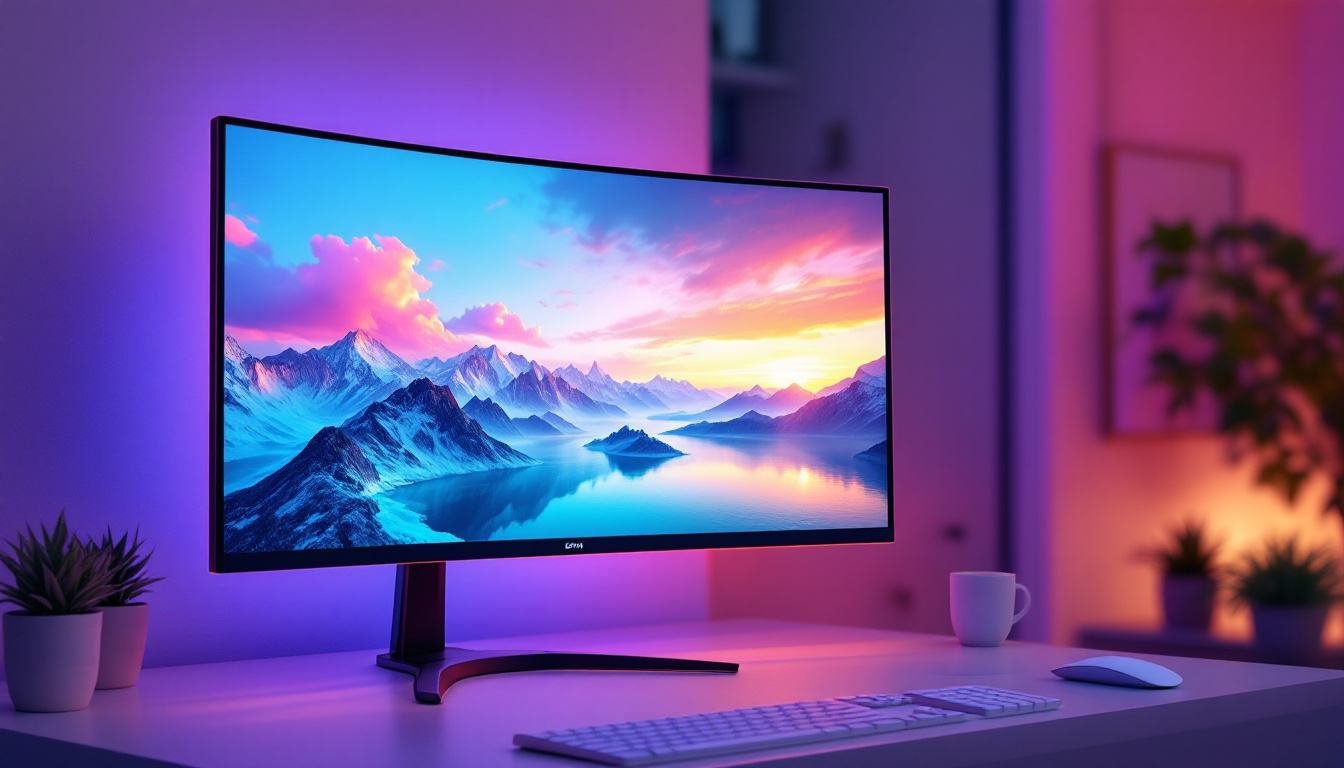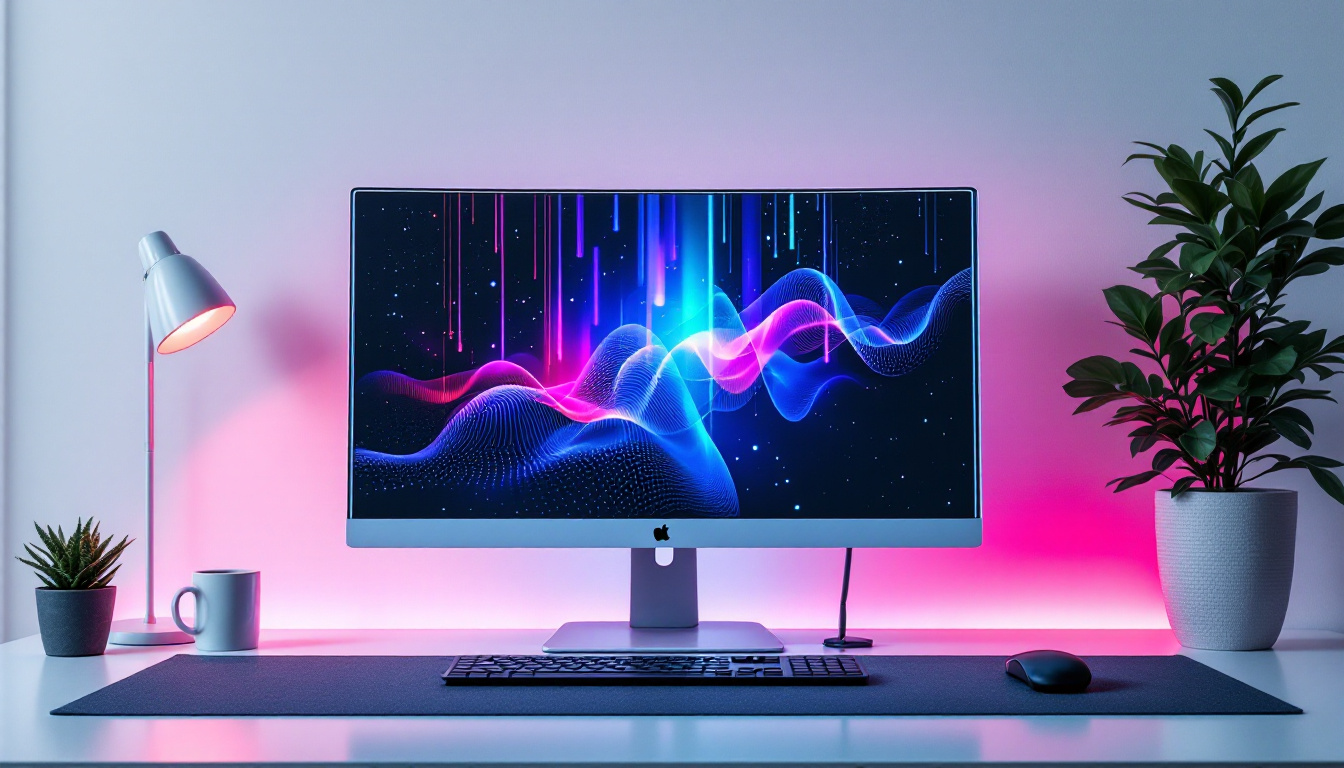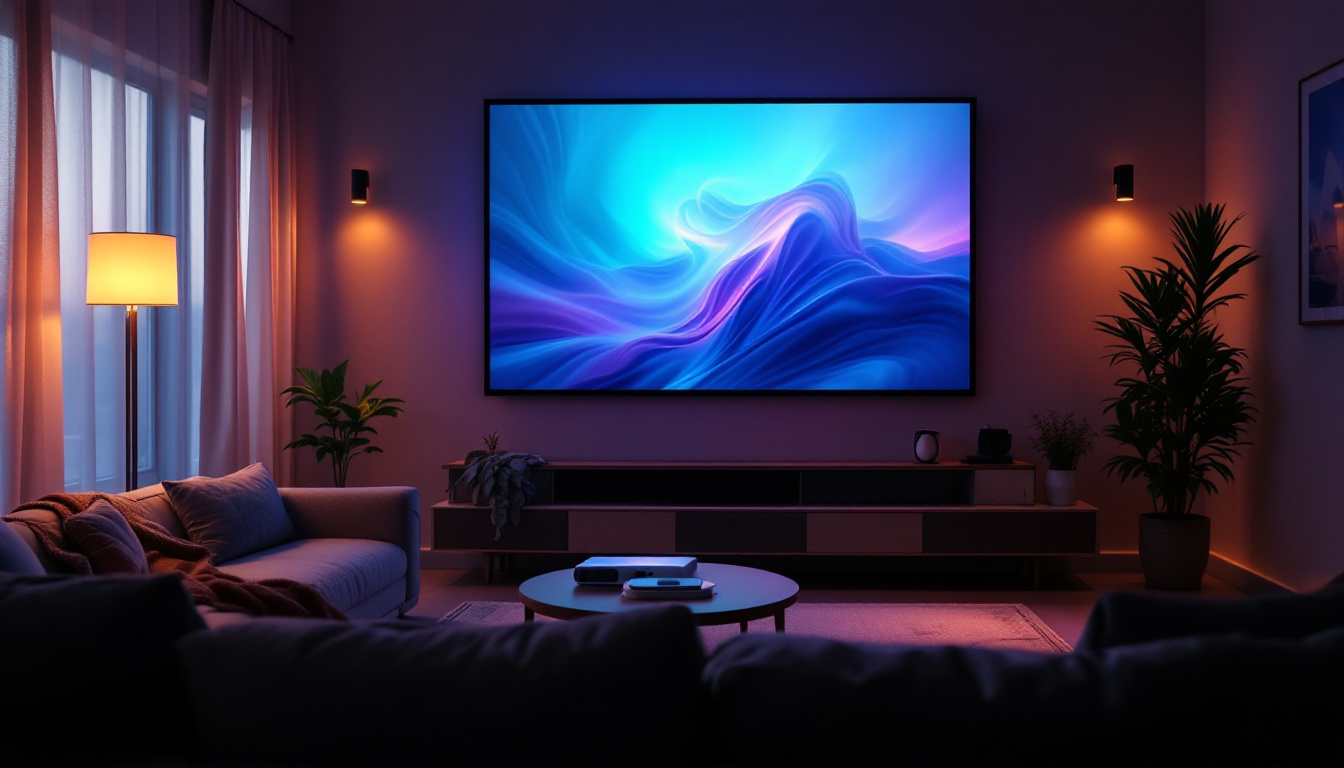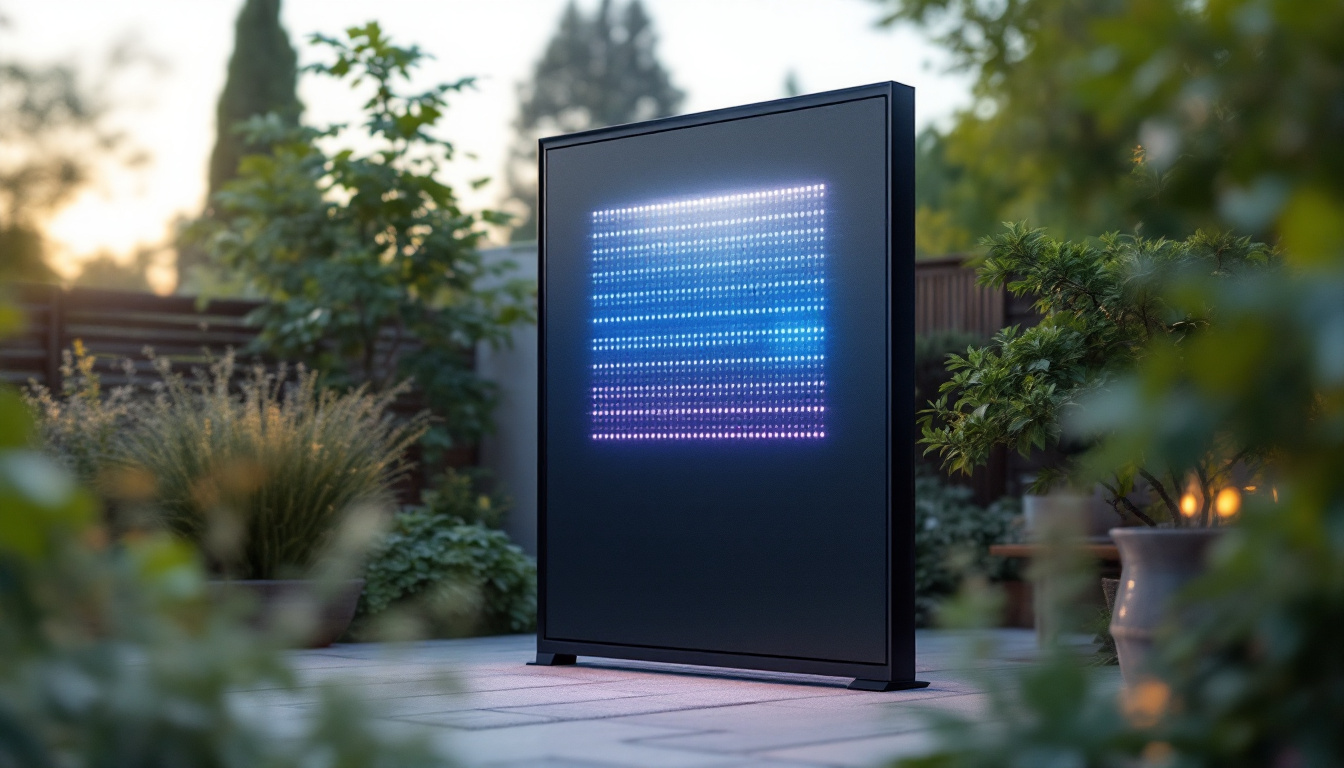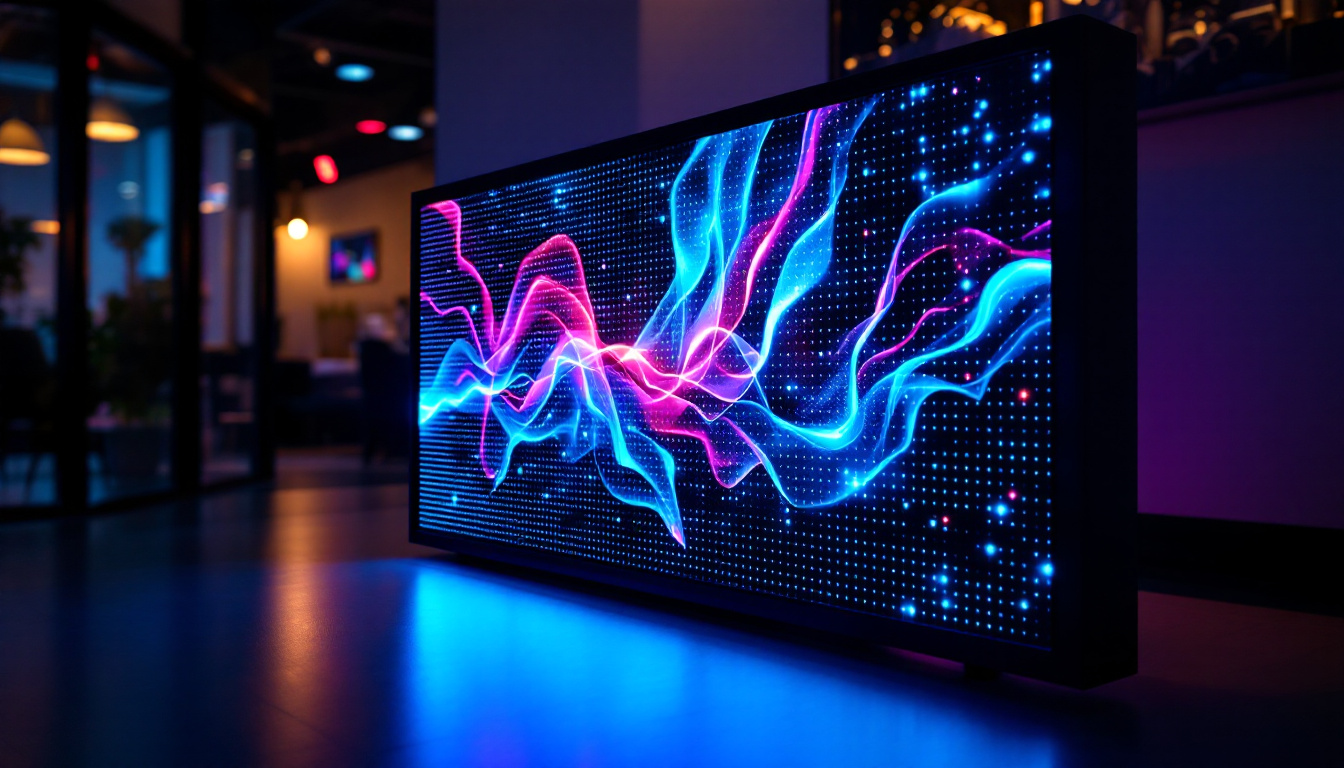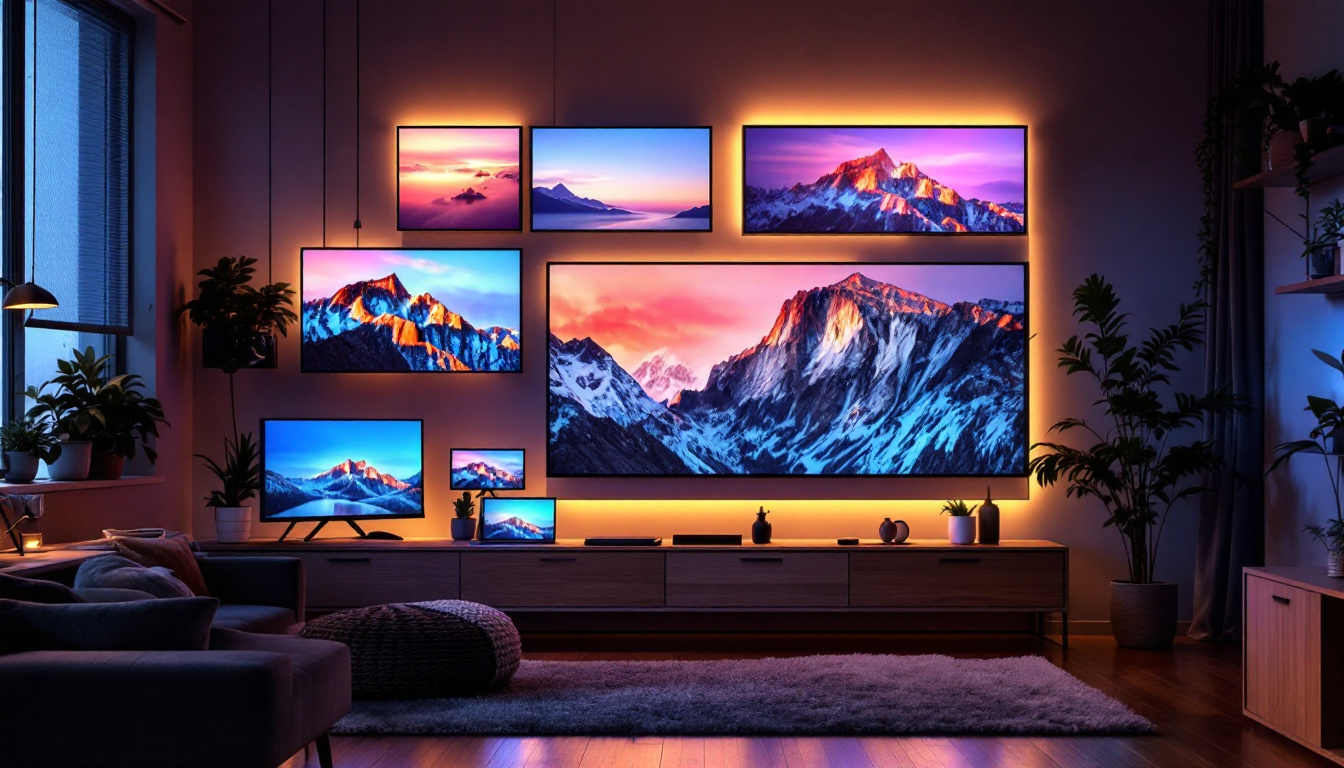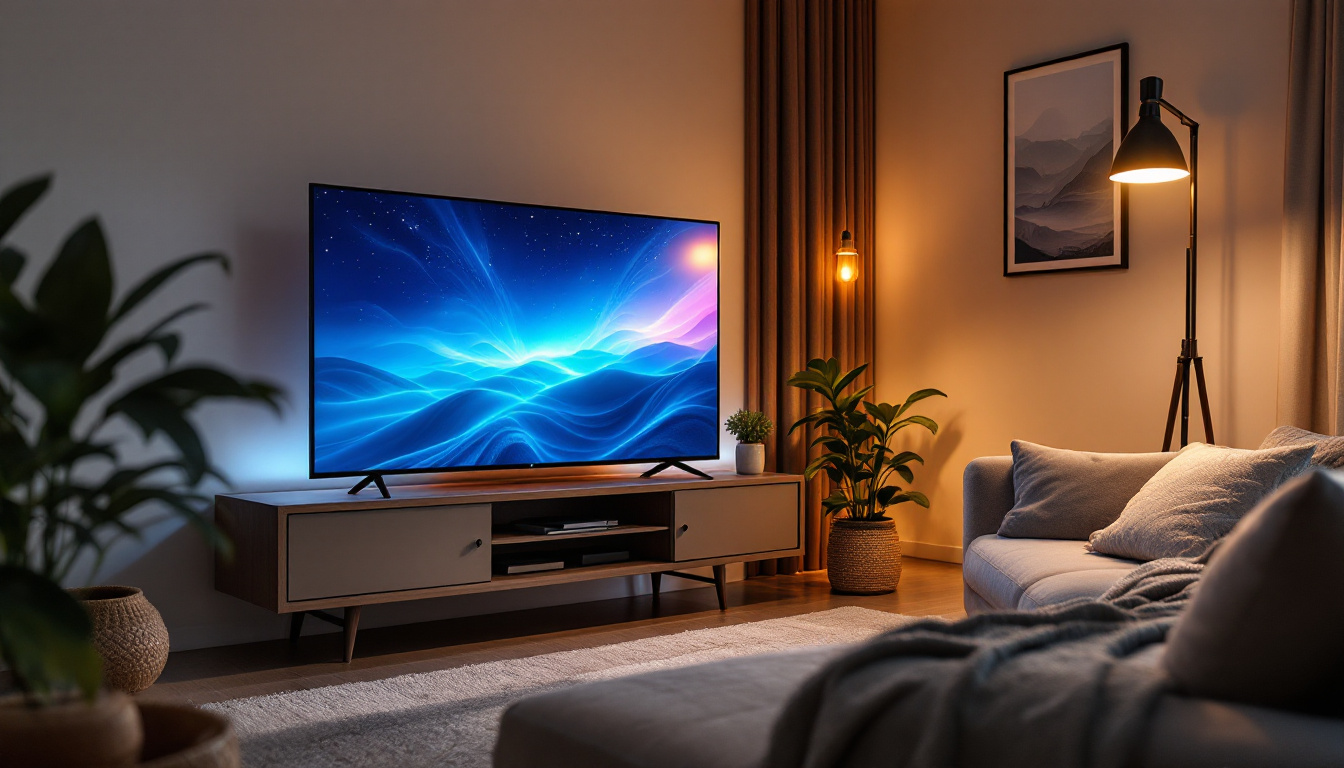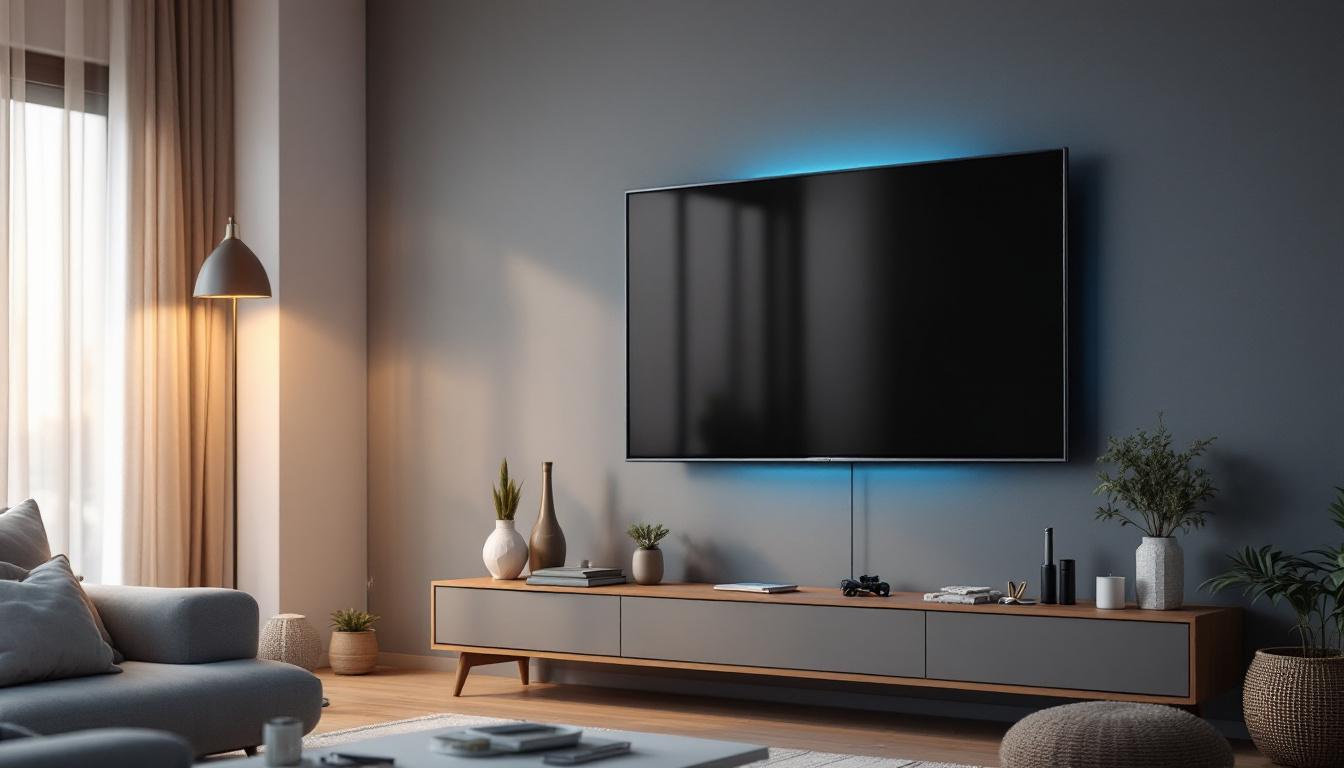TV Projector And Screen: LED Display Explained
In the world of home entertainment, the combination of a TV projector and screen offers an immersive viewing experience that rivals traditional television setups. With advancements in technology, LED displays have emerged as a popular choice for both casual viewers and cinephiles alike. This article delves into the intricacies of TV projectors and screens, focusing on LED display technology and its benefits.
Understanding TV Projectors
TV projectors are devices that project images onto a screen, allowing for larger-than-life viewing experiences. They come in various types, including LCD, DLP, and LCoS projectors, each with its own unique features and advantages. The rise of home entertainment systems has made projectors increasingly popular, offering an alternative to traditional televisions for movie nights, gaming sessions, and sports events. With advancements in technology, modern projectors can deliver stunning visuals that rival the quality of high-end TVs, making them an attractive option for many consumers.
Types of Projectors
When selecting a projector, understanding the different types can help in making an informed decision. LCD projectors utilize liquid crystal displays to create images, offering vibrant colors and sharp details. They are particularly effective in environments where color accuracy is paramount, such as art presentations or graphic design work. DLP projectors, on the other hand, use a digital micromirror device to produce images, known for their high contrast ratios and smooth motion. This makes them a favorite for action-packed films and fast-paced video games. Lastly, LCoS projectors combine the best of both worlds, delivering excellent color accuracy and resolution, making them ideal for home theater enthusiasts who demand the highest quality. Each type has its pros and cons, making it essential to consider factors such as brightness, resolution, and intended use when choosing a projector. For instance, a DLP projector may be ideal for home theaters, while an LCD projector could be better suited for presentations in well-lit rooms.
In addition to these types, there are also portable projectors that cater to those who need flexibility and convenience. These compact devices can easily be transported and set up in different locations, making them perfect for outdoor movie nights or business trips. However, they may sacrifice some image quality and brightness compared to their larger counterparts. Understanding the specific needs of your viewing environment can significantly influence your choice of projector.
Key Features to Consider
When evaluating projectors, certain features stand out as essential for achieving the best viewing experience. Brightness, measured in lumens, is crucial for ensuring clear images in various lighting conditions. A higher lumen count is generally preferred for brighter environments, while lower lumens may suffice in darker settings. Additionally, many projectors come equipped with features like keystone correction and lens shift, which allow for more flexible installation options and help to achieve a perfectly aligned image, regardless of the projector’s placement.
Resolution is another critical factor. Standard resolutions include 720p, 1080p, and 4K, with higher resolutions providing sharper images. The growing popularity of 4K projectors has made them more accessible, offering an immersive viewing experience that enhances detail and depth. Additionally, consider the projector’s throw distance, which determines how far the projector needs to be from the screen to produce a desired image size. This is particularly important for smaller rooms where space is limited. Furthermore, connectivity options such as HDMI, USB, and wireless capabilities can greatly enhance the projector’s versatility, allowing you to easily connect various devices like laptops, gaming consoles, and streaming devices for a seamless viewing experience.
The Role of Screens in Projection
The screen onto which a projector displays images plays a significant role in the overall viewing experience. A high-quality screen can enhance image brightness, contrast, and color accuracy, making it a vital component of any projector setup. The choice of screen can dramatically affect not just the visual quality, but also the comfort and engagement of the audience, whether in a home theater, classroom, or corporate setting.
Types of Screens
There are various types of projector screens available, each designed for specific environments and uses. Fixed-frame screens are ideal for dedicated home theaters, providing a taut surface that eliminates wrinkles and distortions. These screens often come with a black border that enhances perceived contrast and gives a more professional appearance. Portable screens, on the other hand, offer versatility for presentations or outdoor movie nights, making them a favorite among traveling professionals and casual users alike. They can be easily set up and taken down, allowing for spontaneous movie nights or impromptu presentations.
Additionally, there are specialized screens designed for specific projection types, such as ambient light rejecting (ALR) screens that minimize the impact of surrounding light, making them suitable for brighter rooms. These screens utilize advanced technology to filter out ambient light while still allowing the projected image to shine through vividly. This makes them particularly valuable in environments where complete darkness cannot be achieved, such as conference rooms or living spaces with large windows.
Screen Material and Gain
The material of the screen significantly affects the image quality. Common materials include matte white, silver, and high-contrast options. Each material has its unique properties, influencing how light is reflected and absorbed. For instance, matte white screens are excellent for color accuracy and are often used in environments where viewers are seated at varying angles. In contrast, silver screens can enhance brightness and are typically used for 3D projections, as they help to maintain the depth and clarity of the images.
Gain is another important factor to consider. It refers to the screen’s ability to reflect light; a higher gain means a brighter image, but it may also narrow the viewing angle. Understanding gain and material properties can help in selecting the right screen for specific projector types and viewing environments. For example, in a large auditorium where viewers are seated at different angles, a lower-gain screen may be preferable to ensure that everyone can enjoy a clear and vibrant image. Furthermore, advancements in screen technology have led to the development of screens that can adapt to various lighting conditions, providing an even more tailored viewing experience.
LED Display Technology
LED display technology has transformed the landscape of home entertainment, offering numerous advantages over traditional projection methods. This section explores the workings of LED displays and their benefits.
How LED Displays Work
LED (Light Emitting Diode) displays utilize semiconductor technology to produce light. Unlike traditional projectors that rely on lamps, LED projectors use arrays of tiny LEDs to generate images. This method not only enhances brightness but also improves color accuracy and longevity.
LED displays can be either full-color or monochrome, with full-color displays using red, green, and blue LEDs to create a wide spectrum of colors. This technology allows for vibrant and lifelike images, making it a popular choice for both home theaters and professional settings.
Advantages of LED Displays
One of the most significant advantages of LED displays is their energy efficiency. They consume less power than traditional lamps, resulting in lower electricity bills and a reduced environmental impact. Additionally, LED projectors have a longer lifespan, often lasting up to 30,000 hours or more, compared to the 2,000 to 5,000 hours typical of traditional lamps.
Furthermore, LED displays provide instant on/off functionality, eliminating the warm-up time associated with traditional projectors. This feature is particularly beneficial for those who want quick access to their viewing experience without delays.
Choosing the Right Setup
When considering a TV projector and screen setup, several factors come into play. From room size to viewing habits, understanding individual needs can lead to a more satisfying purchase.
Room Size and Layout
The size and layout of the room significantly influence the choice of projector and screen. A larger room may require a projector with higher brightness and a larger screen to ensure optimal viewing. Conversely, smaller spaces may benefit from compact projectors that can produce large images even from short distances.
Additionally, the layout of the room should be considered. Factors such as seating distance, ambient light, and wall color can impact the overall viewing experience. For instance, darker walls can enhance contrast, while bright walls may require screens with higher gain to maintain image quality.
Budget Considerations
Budget is another critical factor when selecting a projector and screen. Prices can vary widely based on features and specifications. It’s essential to balance quality with affordability, ensuring that the chosen setup meets performance expectations without exceeding financial limits.
Investing in a high-quality projector and screen can enhance the viewing experience significantly, making it worthwhile to allocate a reasonable budget for these components. Additionally, consider potential future upgrades or accessories that may enhance the setup.
Installation and Maintenance
Proper installation and maintenance of a projector and screen setup are crucial for optimal performance. Understanding the installation process and regular maintenance can extend the life of the equipment and ensure consistent quality.
Installation Tips
When installing a projector, it’s essential to consider the throw distance and screen placement. The projector should be positioned at the correct distance from the screen to achieve the desired image size. Additionally, ensure that the projector is level to avoid distorted images.
For screens, proper mounting is vital. Fixed-frame screens should be securely attached to the wall, while portable screens should be set up in stable locations to prevent movement during use. Ensuring that the screen is taut will also enhance image quality.
Maintenance Practices
Regular maintenance can prolong the life of both projectors and screens. For projectors, clean the lens periodically to prevent dust buildup, which can affect image quality. Additionally, check the filters and replace them as needed to maintain optimal airflow and cooling.
For screens, keep the surface clean and free from dust or stains. Use appropriate cleaning materials to avoid damaging the screen’s surface. Regular inspections can help identify any issues early, allowing for timely repairs or replacements.
Conclusion
In summary, the combination of a TV projector and screen, particularly with LED display technology, offers an unparalleled viewing experience. By understanding the different types of projectors, screens, and the advantages of LED displays, individuals can make informed decisions that enhance their home entertainment setups.
Whether for movie nights, gaming, or presentations, investing in the right projector and screen can transform any space into a captivating viewing environment. With careful consideration of room size, budget, and installation practices, achieving the ultimate home theater experience is within reach.
As technology continues to evolve, staying informed about the latest advancements in projector and screen technology will ensure that users can enjoy the best possible viewing experiences for years to come.
Explore Cutting-Edge LED Displays with LumenMatrix
Ready to elevate your home entertainment or professional display to the next level? Discover the innovative world of LumenMatrix, where our commitment to excellence in LED display technology sets us apart. From the comfort of your living room to the buzz of a sports arena, our diverse range of LED display solutions, including Indoor and Outdoor LED Walls, Vehicle Displays, LED Posters, Sports Displays, and more, are designed to create immersive visual experiences that captivate and engage. Embrace the future of visual communication with LumenMatrix’s advanced digital signage and LED displays. Check out LumenMatrix LED Display Solutions today and transform your space into a dynamic visual spectacle.

